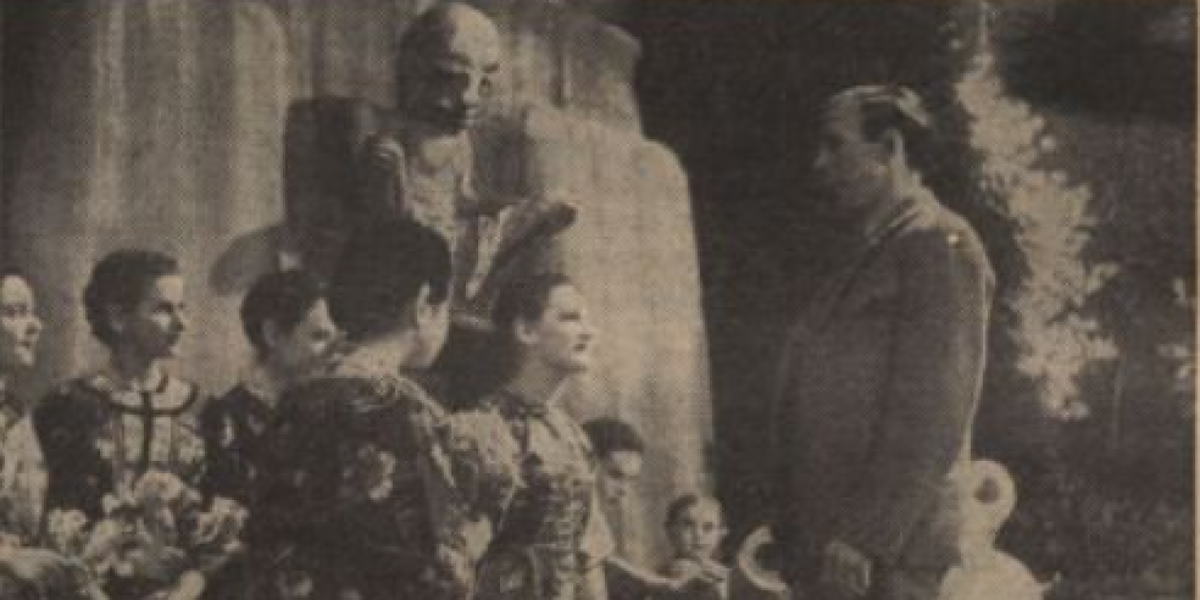H G Wells' The Time Machine (1949)

Radio Times, February 21, 1949: The Time Traveller (Russell Napier, right), at the completion of the first stage of his journey into the future, meets the Eloi, the people of A.D. 802,701. One of the scenes from tonight's television interpretation of H G Wells' "The Time Machine"
Adapted and produced for television by Robert Barr. A fantastic voyage into the future. The story of a time traveller who projects himself into the year 802,701 A.D., and journeys onwards into the twilight of the world.
| Production company/ies | Broadcast station(s) | Broadcast date(s) |
|---|---|---|
| BBC | BBC Television Service | January 25, 1949 (8.30pm) February 21, 1949 (9.15pm) |
Production credits
| Producer(s) | Director(s) | Writer(s) | Other notable credits |
|---|---|---|---|
| Robert Barr | Jan Bussell | Robert Barr | Production designer: Barry Learoyd |
Acting credits
|
Notes
A live performance of an adaptation of H G Wells' science fiction novella, first published in 1895. The story follows an unnamed protagonist, referred to as the Time Traveller, who invents a machine that allows him to travel through time. The Time Traveller journeys to the distant future, specifically the year 802,701 AD, where he encounters two distinct species: the Eloi and the Morlocks. The Eloi are a gentle, childlike race living above ground in a seemingly utopian society, while the Morlocks are a more sinister, subterranean species. The novella explores themes of class division, evolution, and the potential future of humanity. This work is credited with popularizing the concept of time travel and has had a significant influence on the science fiction genre.
The Radio Times listing only credits Robert Barr for the adaptation and production, and Barry Learoyd as production designer but - according to IMDb - the production was directed by Jan Bussell, who was responsible for both the 1938 and 1948 productions of R.U.R.. This adaptation was notable for its use of special effects, which were quite innovative for the time, relying heavily on back projection techniques. Radio Times only credited Russell Napier but the other actors are listed on IMDb. A revised production was televised at 9.15pm on February 21, 1949. Unfortunately, no recordings of either live broadcast are known to exist.
The most well known adaptation was the 1960 US film version starring Rod Taylor, but there was also an American TV version made in 1978.
